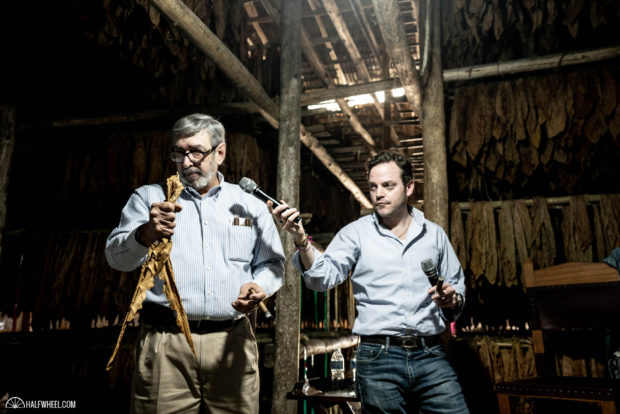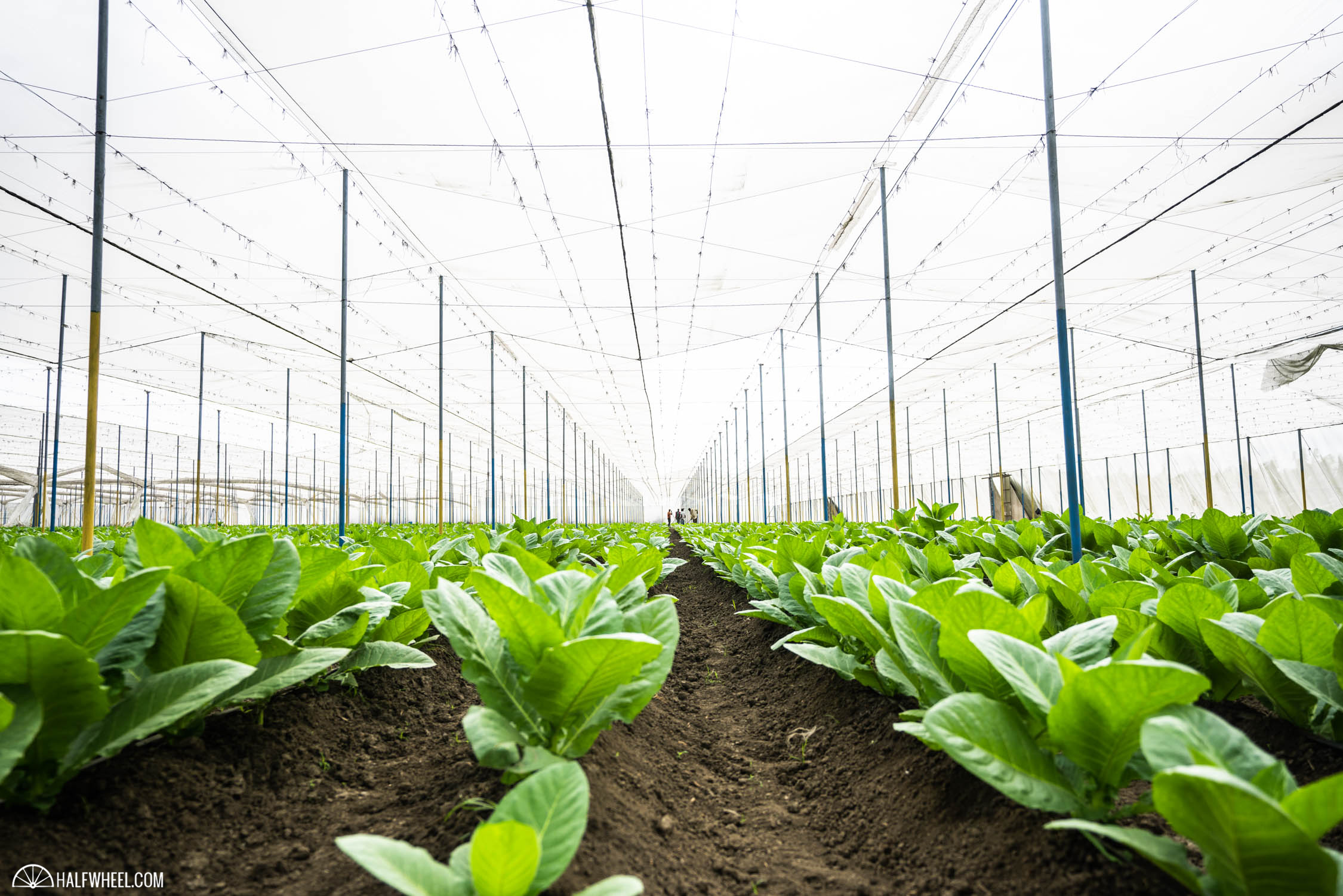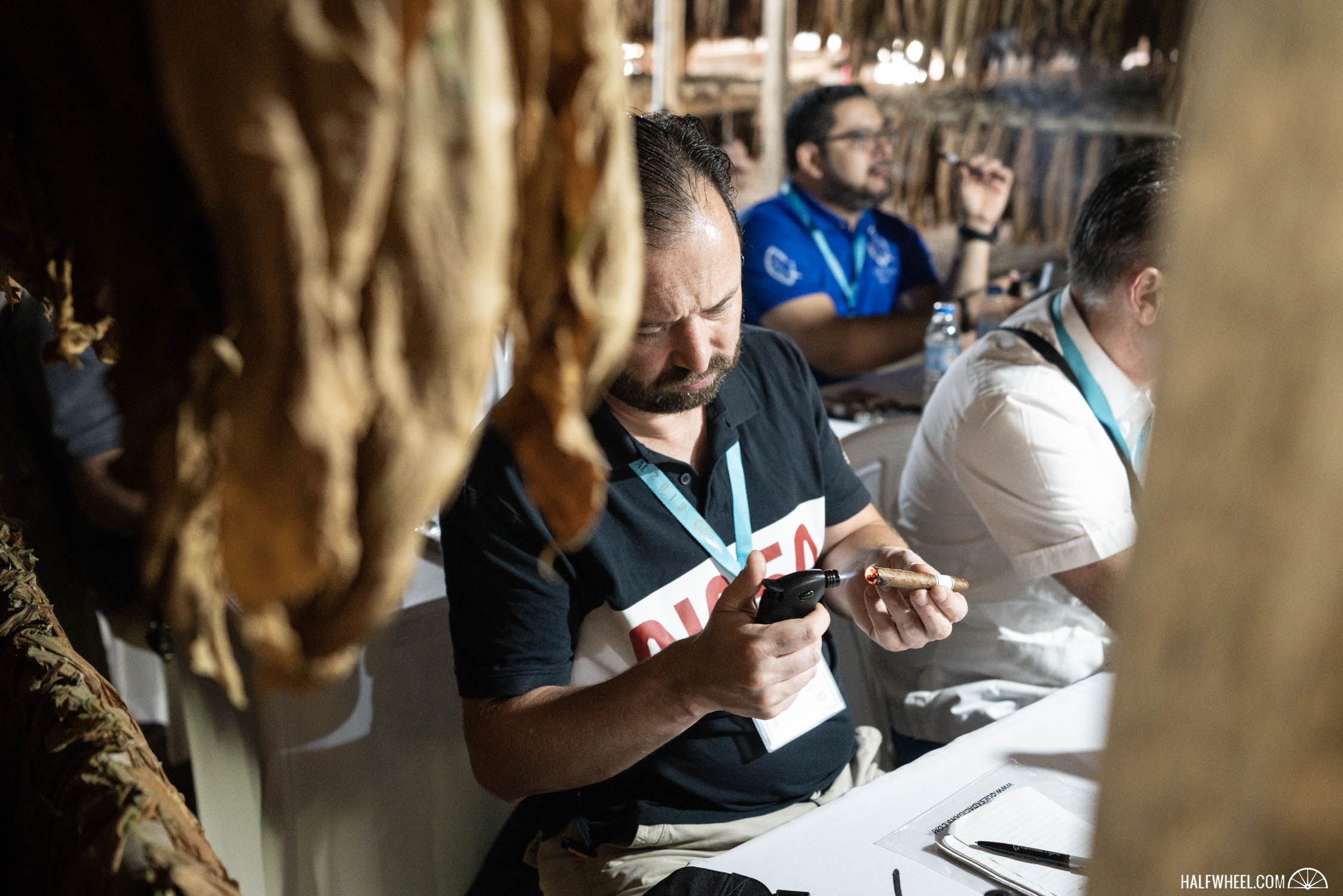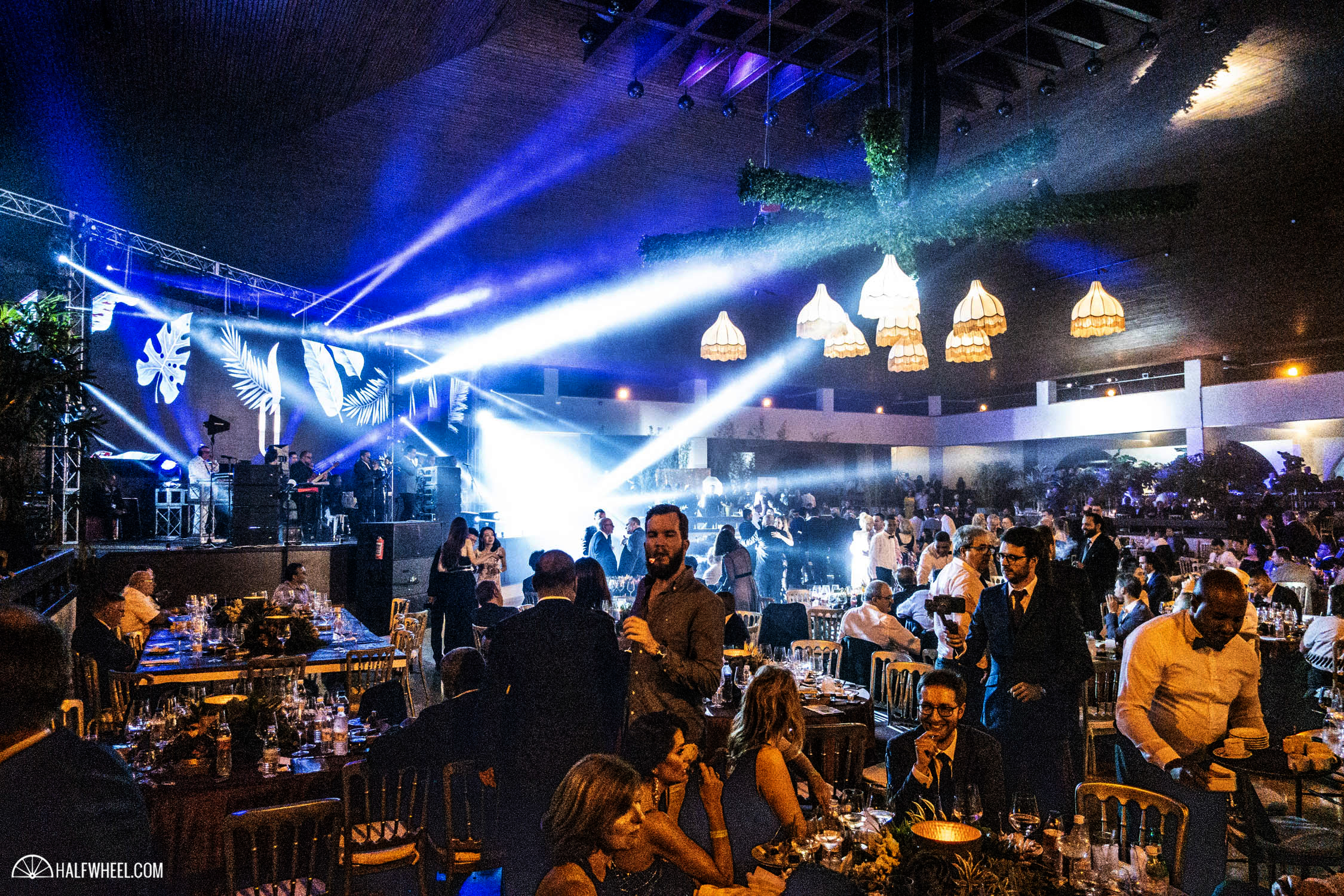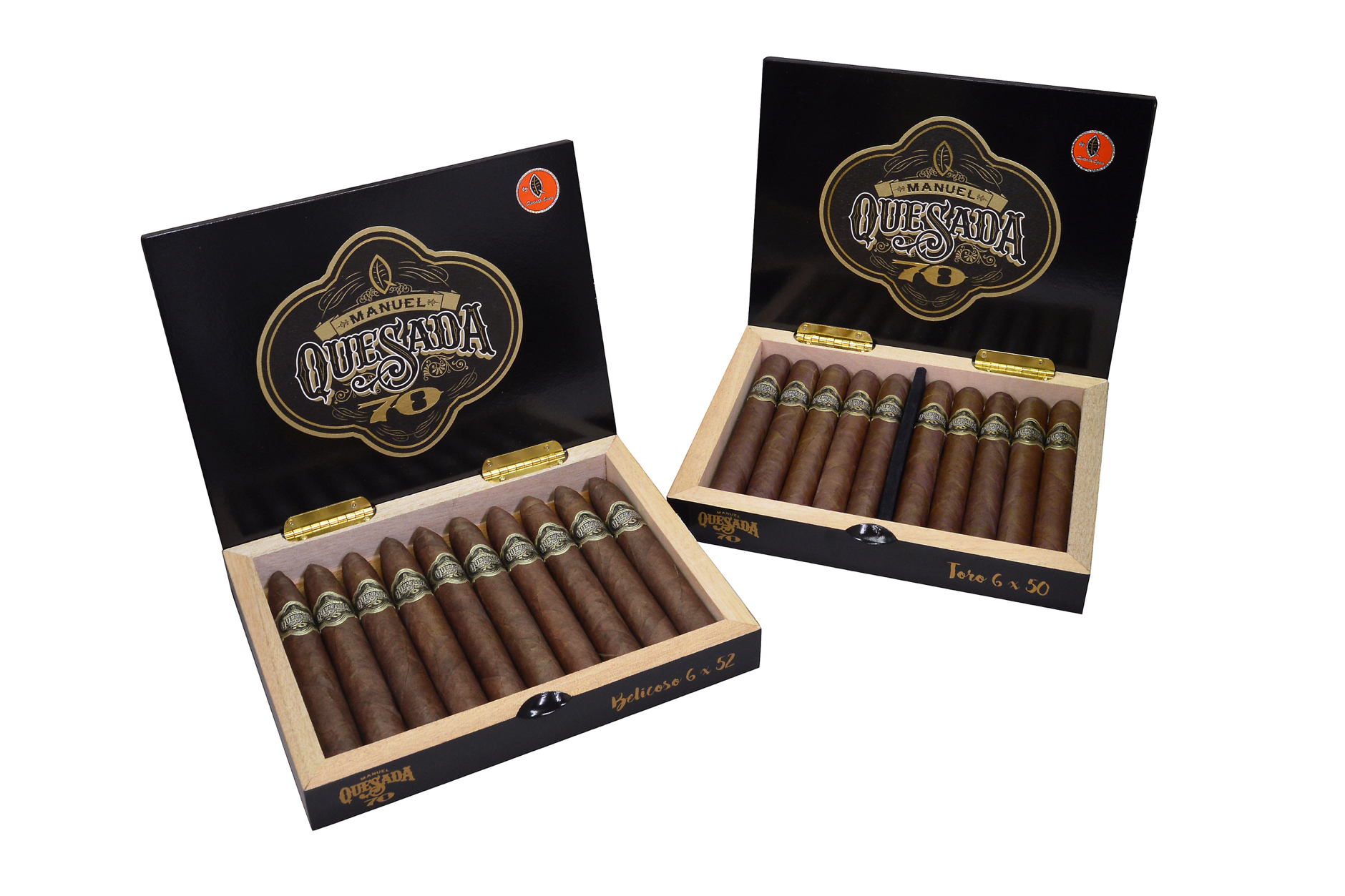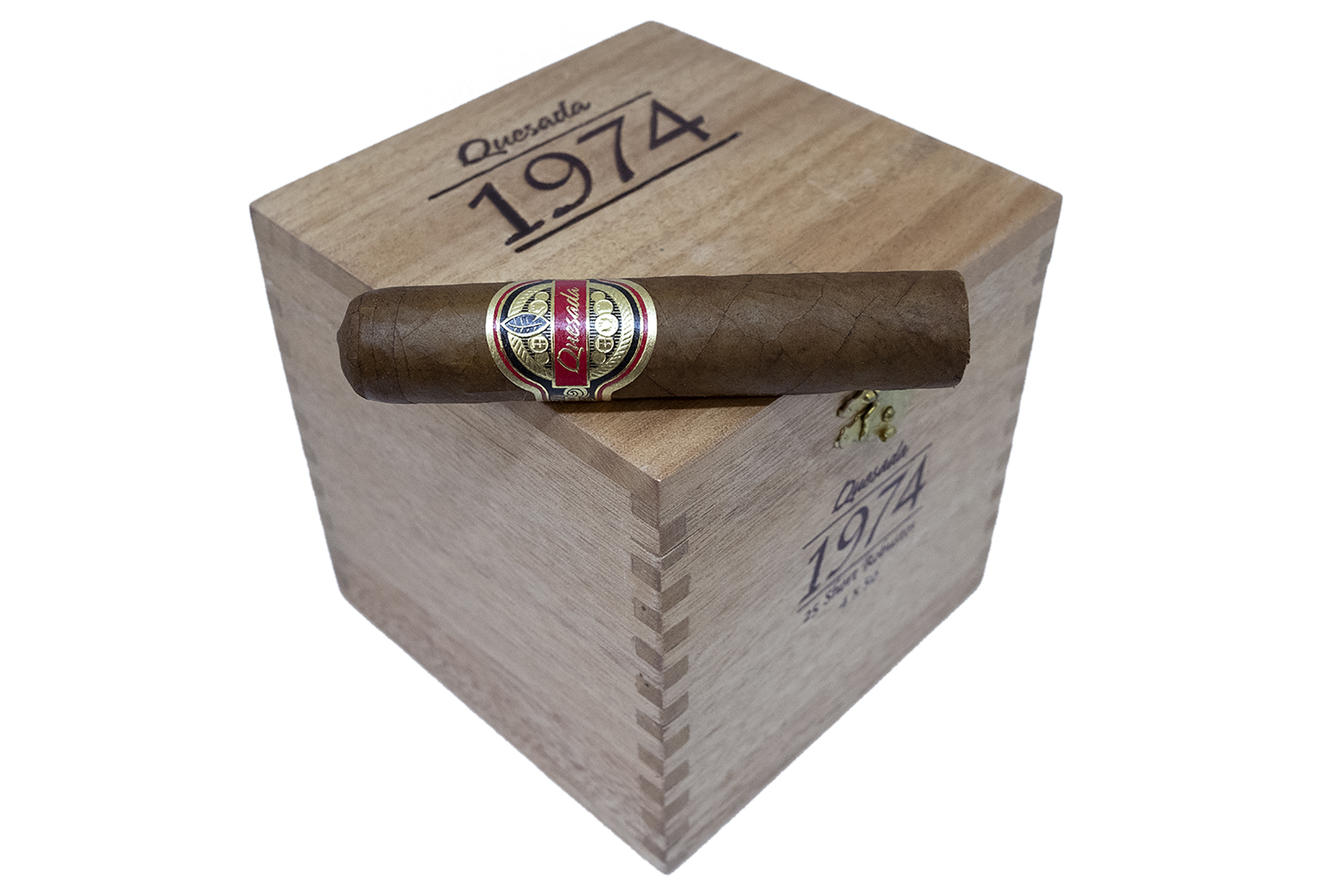In case you missed it, I was exhausted pretty much all of Thursday. On that note, Friday didn’t start much better. That being said, I was looking forward to my planned Friday visit, which was a trip to a Quesada farm, a bit different from the company’s normal tours which are usually at the factory. I had also spoken to Michael Herklots of Nat Sherman the night before who had said that he was looking forward to some sort of presentation.
On the bus we were joined by Manuel “Manolo” Quesada Jr., the president of Quesada, who told us we would be going to a farm in Villa Gonzalez. It’s a small thing, but one thing I appreciated was that Quesada said we were going to Villa Gonzalez, and that many of us had probably been to the area before because that’s where Davidoff does its farm tour. Most manufacturers seem to shy away from mentioning one another publicly, but that little factoid probably helped some people on the bus in terms of geographical recognition, even if they couldn’t pick out the Dominican Republic on a map of the world.
He also said he has “a capacity for boring people” and Fred Rewey and I then spent some time trying to figure out whether he meant that he had a capacity to bore people or that he had a capacity to (tolerate) boring people or perhaps both.
Our bus ride to Villa Gonzalez was pretty quick and we eventually pulled off the side of the road onto a farm that was growing wrapper. Quesada explained that this was actually the second crop that had been planted on the farm. The first crop was moved from the seedbeds to the ground in early November, this crop was transferred in early January.
We actually didn’t spend a ton of time in the field because we moved onto the main event, which was held in a barn. There we were presented with six smaller cigars and one large cigar. And Herklots and Quesada began a discussion of a lot of things, mainly the differences between both the parts of a plant, i.e. the primings, and also the differences of the same plants between different years. We smoked six different small cigars, each containing a different priming and vintage from the same farm and seed, criollo 98 grown here: seco 2014, seco 2014, seco 2016, ligero 2014, ligero 2016, ligero 2018.
- The cigars we were given to smoke each contained just one priming from one vintage with the exception of one cigar which contained four of each of the tobaccos.
- The setting for the event was pretty special, surrounded by wrapper leaves curing.
- Michael Herklots of Nat Sherman talked through a lot of the process which inspired more questions than I think I’ve ever heard asked on any Procigar tour.
- An attendee smokes all three of the seco vintages at once.
Quesada and Herklots talked about what they looked for both when individually determining how a specific tobacco was performing, but also in the larger context of blending cigars. The basics were the feel, the look, the aroma, the cold draw and then the smoke itself.
It was a fascinating exercise that illustrated, amongst many other things, the challenges of both farming and blending. Quesada said the 2014 was a crop that developed to be more potent than average, as such the company was still aging the tobacco waiting for the moment when it would be ready to use for cigars. On the flip side, the 2016 crop experienced more rain the ideal and it ended up being milder. As for the 2018 vintage, it was described as being an ideal crop with no major impacts from rain at any stage.
Getting to smoke both the primings, the second from the lower part of the plant and the ligero from the top part, and vintages displayed stark contrasts, all of which would go into the actual practice of blending cigars. We ended by smoking a larger cigar that contained equal parts of the 2014 and 2018 secos and ligeros.
Our group was smaller than some other tours, but really the ideal size for an exercise like this. The duo spent time going over the process and fielded a lot of questions from a pretty engaged audience.
It reminded me of an email I sent Herklots nearly a decade ago where I asked about this very problem. How does a cigar maker take tobacco—which will vary from year to year, farm to farm, etc.—and make an end product that consumers expect to be consistent everyday. There is no short answer, but the best explanation from the pair is that you constantly taste both the components and the final product, and you make adjustments when needed to produce the most consistent results for the final product.
From there it was off to lunch before I headed back for a much-needed nap before the final dinner, the gala.
As has been the case for every Procigar I’ve attended, the gala was held at Centro Especial, a large event space. For most, the white party is the highlight of the dinners, but the gala is where Procigar pulls out all the stops as far as entertainment. That included dancers performing aerial ballet a la Cirque du Soleil, various live musical acts and the auction.
Quesada and Herklots were once again back on stage to emcee the auction, which raises money for two local charities: Hospicio San Vincente de Paul and Voluntariado Jesus con los Niños.
In total, the auction raised over $170,000, combined with the charity poker tournament earlier in the day and the total contribution from Procigar was $175,000.
I ended up leaving the auction earlier mainly due to the temperature inside Centro Especial, which was substantially warmer than I ever recalled it being, and then struggled to fall asleep.
There will be one more post wrapping up Procigar 2019 tomorrow.

